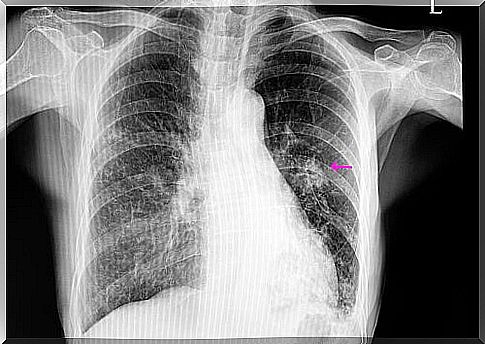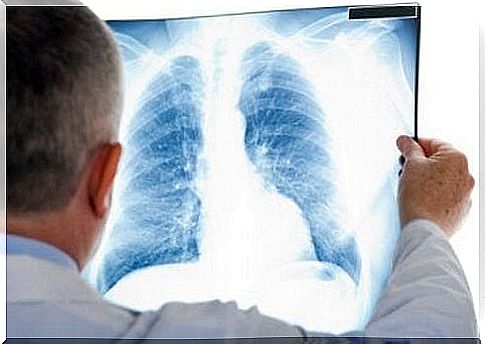Have You Ever Heard Of Lumps In The Lungs?

When we hear that we have been diagnosed with a pulmonary nodule, the first thought that comes to our mind is cancer. However, while sometimes both of these pathologies share some similarities and relationships, it can also be a mild process.
A pulmonary lump is a mass that appears in the lungs and can measure anywhere from five to thirty millimeters. This change is becoming more common and is estimated to affect around 0.2% of the population. However, nearly 60% of these nodules are benign.
The causes of this disease are very diverse, from infection to the cancer process. Most of the lung nodules are discovered accidentally when performing axial computed tomography – or X-rays.
It is important to diagnose these types of changes early to avoid complications and rule out that it is something more serious. Therefore, in this article, we explain everything you need to know about a pulmonary nodule. You will also learn what symptoms it causes.
Why is a pulmonary nodule formed?
As already mentioned, a pulmonary nodule is a mass that appears in the lungs. Therefore, its causes can vary greatly from case to case. Most often, a pulmonary nodule appears in the secondary stage of an infection caused by either bacteria, fungi or parasites.
Among the infectious causes, it should be noted that pulmonary nodules are also common in people suffering from tuberculosis. Although their incidence is generally decreasing, the infection still shows a relative frequency.
Cancerous cause
Currently, the first thing that should be ruled out in the case of a pulmonary nodule is the suspicion that it is a carcinogenic process. This is very important as lung cancer is one of the most common types of cancer, including from smoking.

In cases of malignant lesions, the nodules usually appear irregularly radiographically with poorly defined edges. They are also usually smaller than benign nodules. In addition, they are clearly associated with certain risk factors, such as:
- Smoking
- Age over 35
- The fact of a previous cancer.
- The fact that the lung lump has grown rapidly in recent months.
However, it must be emphasized that not all lung nodules are malignant. There are also some benign tumors, although it must be admitted that they are much rarer than the previous ones.
Other causes of a pulmonary nodule
There are other diseases that can cause this type of change in the lungs. For example, it concerns certain autoimmune processes such as Wegener’s granulomatosis or rheumatoid nodule. However, both are quite rare.
Similarly, in some people a lung lump may develop as a result of an injury, a metabolic disease called amyloidosis, or the genesis of a bronchial cyst.
How is a pulmonary nodule diagnosed?
In order to diagnose a pulmonary nodule and determine its cause, a good medical history of the patient must first be drawn up. You need to know if you have had tuberculosis, have been exposed to certain infections, or come into contact with infected people.
The physician should also know whether the patient smokes or smoked cigarettes or not. Numerous studies have shown that a large proportion of the nodules are cancerous and clearly related to smoking.
After this is done , specific imaging tests are performed to locate the lump. In addition, the results of these studies allow the observation and analysis of certain features needed for further diagnosis. For example, the shape and size of a nodule are important to distinguish between a benign and potentially malignant lesion.
Chest x-ray and computed tomography are most often performed . To find out the exact cause of a pulmonary nodule, a biopsy is also sometimes performed to analyze the tissue that makes it up.

Which first-line treatment is most often recommended?
Treatment will depend on what’s causing the lump. First, when its cause lies in an infectious process, it may not require special, separate treatment. Instead, your doctor may prescribe antibiotics or antifungal agents to stop the infection.
When the cause is not known exactly, treatment is directed towards the risk of cancer. For example, in young non-smoking patients whose lump does not appear to be malignant, regular re-testing may be necessary. This will show if the nodule is changing or growing.
On the other hand, if there is a risk of cancer, the most important thing is to do a biopsy. If it is carcinogenic, you may need to undergo surgery to remove it. When surgery is not possible, chemotherapy or radiation therapy is selected.
In conclusion, the negative impact of smoking should be emphasized once again. We must be aware of the risks and carry out frequent medical examinations to diagnose this type of pathology at an early stage.









